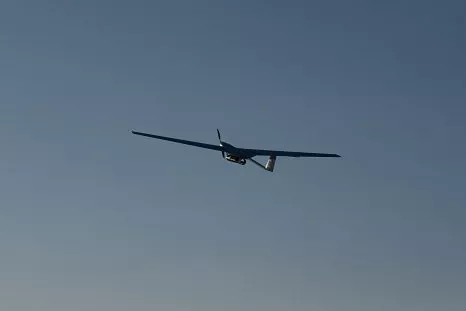Ukraine's New Weapon Could Cross Putin's 'Red Line'
A new U.S.-supplied High Mobility Artillery Rocket System (HIMARS) slated to be sent to Ukraine may include a modification that crosses Russian President Vladimir Putin's "red line."
The Department of Defense (DoD) announced on Monday that Ukraine would be sent a single new HIMARS "and additional ammunition" as part of a $100 million aid package that also includes anti-aircraft missiles, artillery rounds and cold-weather gear.
A DoD press release states that the aid will help provide Ukraine "with the capabilities it needs to defend itself now and deter Russian aggression well into the future," calling the move "a smart investment."
A report from Militarnyi speculates that only one HIMARS being sent could indicate that it will include a "unique modification" that allows it to fire long-range weapons. Putin's government has repeatedly warned the U.S. and its allies against sending Ukraine long-range weapons.
U.S.-made weapons that could be fired with a HIMARS modified for long-range use, according to Militarnyi, potentially include Ground Launched Small Diameter Bombs (GLSDBs) and long-range missiles intended for Army Tactical Missile Systems (ATACMS).
Newsweek reached out for comment to the Pentagon and the Russian Ministry of Defense via email on Tuesday.
Last year, Russian Foreign Ministry spokeswoman Maria Zakharova warned that "if Washington decides to supply Kyiv with longer-range missiles, it will cross the red line and become a direct party to the conflict."
The U.S. has already sent Ukraine GLSDBs and ATACMS this year, while allies have also smashed through the supposed red line. Despite this, Russia has yet to follow through with its threats.
In January, one day after the U.S. announced it would be sending Ukraine GLSDBs, Kremlin spokesman Dmitry Peskov said that the weapons—which potentially allow Ukraine to strike targets within Russia—were "extremely dangerous" and would bring "the conflict to a whole new level."
After the U.K. government announced that it would be sending Ukraine long-range "Storm Shadow" missiles in May, Peskov said that the Kremlin viewed the development "very negatively" and threatened "a relevant response from our military."
The U.S. agreed to supply Ukraine with ATACMS in September. Putin acknowledged that the systems posed "an additional threat" to Russia, while insisting that Moscow's forces would "be able to repel" related attacks. He also warned that the U.S. had made "a mistake" and dragged out the suffering for Ukraine.
"There is nothing good for Ukraine in this sense either—it simply prolongs the agony," said Putin. "The mistake of a larger, so far invisible nature ... is that the United States is more and more personally drawn into this conflict."
Although ATACMS missiles have a maximum range of more than 180 miles, the variant of the system that the U.S. sent to Ukraine is reportedly equipped with cluster munitions limited to a range of 100 miles.
Disclaimer: The copyright of this article belongs to the original author. Reposting this article is solely for the purpose of information dissemination and does not constitute any investment advice. If there is any infringement, please contact us immediately. We will make corrections or deletions as necessary. Thank you.


